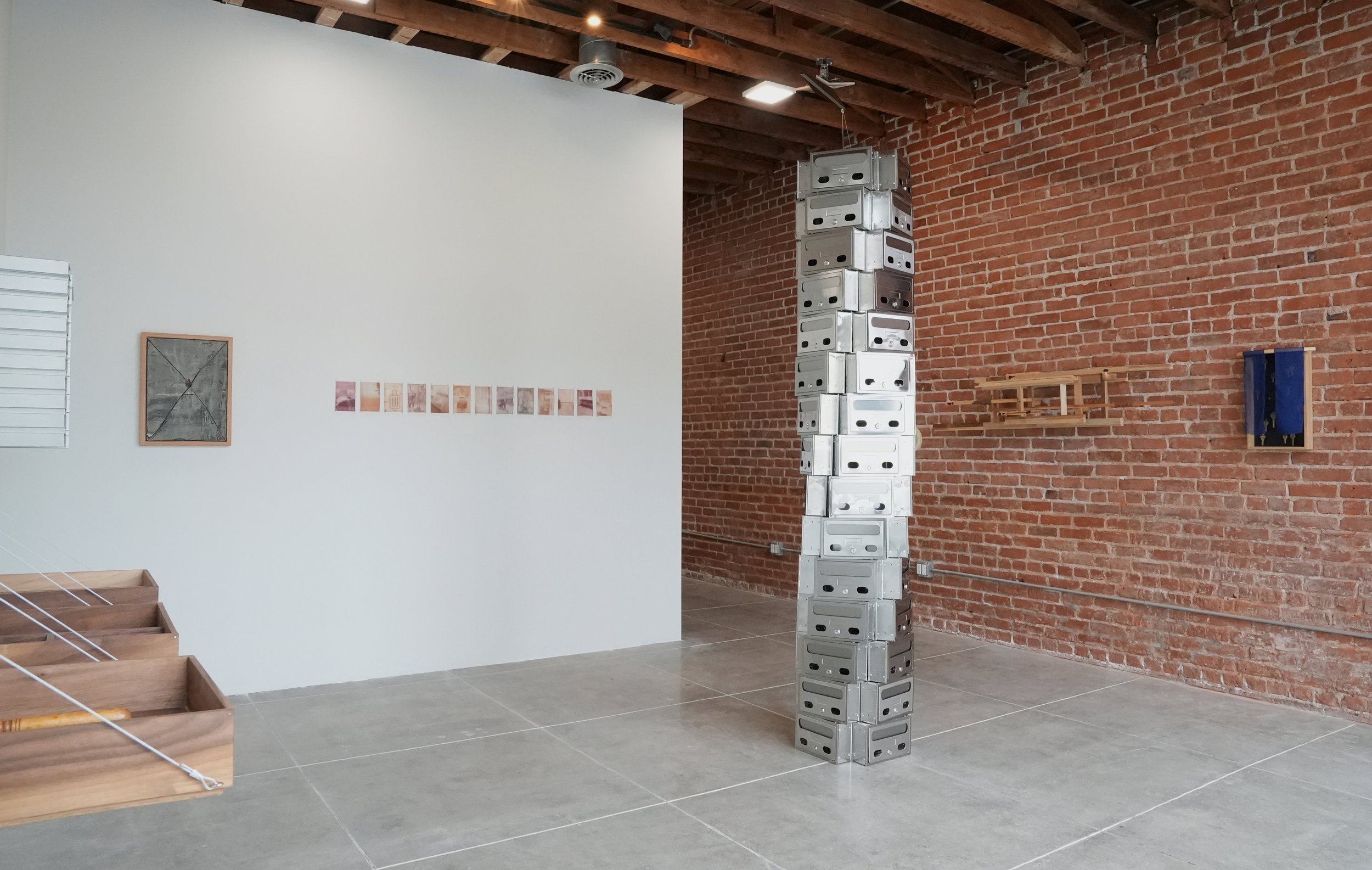Messages in Flight: “Function–Fiction” at GOBI
The swan goose’s most amusing feature is its bright orange webbed feet. In China’s protected lakes and wetlands, their wading legs are easy to spot as they create a crescendo of ripples on unperturbed waters. The swan goose is just as noticeable in flight, with comical glints of its flashy feet dotting the sky. Ever so observant and imaginative, historical Chinese travelers and workers found a confidant in the swan goose. To send news to their loved ones back home, they would tie messages to the big, webbed, orange feet of the waterfowl and wish their friends and family well upon its spring migratory flights.
The longing for such connection is thick throughout Function–Fiction, the group show inaugurating GOBI’s permanent fixture in East Hollywood. Founded by Jenny Eom, the contemporary art program and curatorial initiative has run nomadic shows since 2021. It borrows its name from a Korean furniture piece popularized during the Joseon Dynasty. The gobi, with its use of a lattice framework and thin sheets of wood, embodied both aesthetic appeal and function as it held a household’s literature, scroll letters, and other missives. Featuring the work of Anais Franco, jinseok choi, Jisoo Chung, Max Cleary, Ruoyi Shi, Shin Danbi, UJU, and Yoonjeong Lee, Function–Fiction is a welcome celebration of GOBI’s namesake where Asian and Asian American artists take inspiration from the imperial-era furniture piece to present thoughtful image-making and storytelling around collective histories and known rituals.
Ruoyi Shi found inspiration in the swan goose—among other messenger birds like the pigeon, crow, and bluebird. The Chinese-born visual artist uses folklore and oral history to construct a unique perspective on humor and fiction. Her work, Etymology of Translation –The Birdcatcher’s Bird, is a series of boxes that display hand-drawn illustrations of messenger birds and found objects—such as the bands that are affixed to birds’ legs to track their migration and behavioral patterns—to share ideas on the transmigration of the Chinese language. Shi also uses metal hardware to create the webbed feet of a swan goose and attach them to the bottom corners of the box that represents the large waterfowl’s role in delivering messages. Even in her exploration of oral histories, she is playful. To see the distinctive large feet of the swan goose disembodied from the rest of its body begets some bemusement in our own fractured histories, shaped and reshaped over time with the help of our farthest traversing creatures.
Shi’s series for Function-Fiction is unforgettable because it blows open the meaning of language and the lengths these human-made languages have reached, despite artificially imposed policies such as immigration restrictions and social stratification. Our need for communication weighs on us heavily, even in memory. Take Seoul- and Paris-based Shin Danbi, who contributed the most commanding work to Function–Fiction with The Sounds Outside the Door II. Globally recognized for her large-scale installations that evoke a sense of healing, yearning, and forgiveness, the documentarian and artist creates the same experience for GOBI’s gallery space. At the center of the gallery resides a tower of generic aluminum mailboxes in a helix formation. They resemble the unfussy single-family apartment buildings in Korea that were constructed by government agencies before real estate speculation dawned on Seoul. From the installation comes a loop of field recordings that capture slices of life: a noisy television set, children running and laughing through hallways, mundane conversations seeping through the doors. The multisensory installation is rooted in Shin’s visceral memories of living in one of these projects, growing up so close to her neighbors. We remember more fondly the moments when we were with one another than when we were alone.
From Anais Franco comes a more dour reminder of the times when we were together, alone. Born and raised in Los Angeles, the Mexican-Japanese artist uses ceramics to highlight the fragmented reality that Japanese Americans endured during and after World War II. For Function–Fiction, Maintaining the Sagebrush is a look at a coyote brush and dead trees that Franco observed at Manzanar, a concentration camp at the foot of California’s Sierra Nevada Mountains where more than 120,000 Japanese Americans were incarcerated from 1942 to 1945. Her ceramic work also serves as a double exposure image; beyond the fast-growing native plants and chaparral lay remnants of the barracks and structures that suppressed and dehumanized an innocent ethnic group. Remaining Foundation stands out as one of the heaviest stories of connection, yet still quietly and constructively engages with other—perhaps more literal—interpretations of the message-carrying gobi.
I am hopeful for GOBI because of its dedication to Korean artists and cultural producers as well as diasporic artists who work in Los Angeles. Function–Fiction shows much promise with its curation of artists, from renowned to emerging, that create affecting work at a time when children of immigrants seek narratives that go deeper than just representation. There is history without being inaccessible; there is memory without being cloying.
The swan goose does not know artificially imposed borderlands nor the segmentation of ethnic groups as it flies through what is now China, Mongolia, Russia, Japan, North Korea, and South Korea. All it knows is an expanse. I am never opposed to new physical spaces that promise space for immigrant artists, especially in an increasingly tenuous time for producers who aren’t white American. I wish to see more works from the greater Asian diaspora at GOBI, ones that continue to challenge without denying that it still does feel novel to be surprised by unfamiliar Asian perspectives. I am hopeful, as I have already learned so much about the all-encompassing gobi simply by visiting a narrative-driven gallery that cares about the perpetual excavation of lost histories.
Function–Fiction is on view at GOBI, Los Angeles, from June 8 to August 19, 2024.
You Might Also Like:




